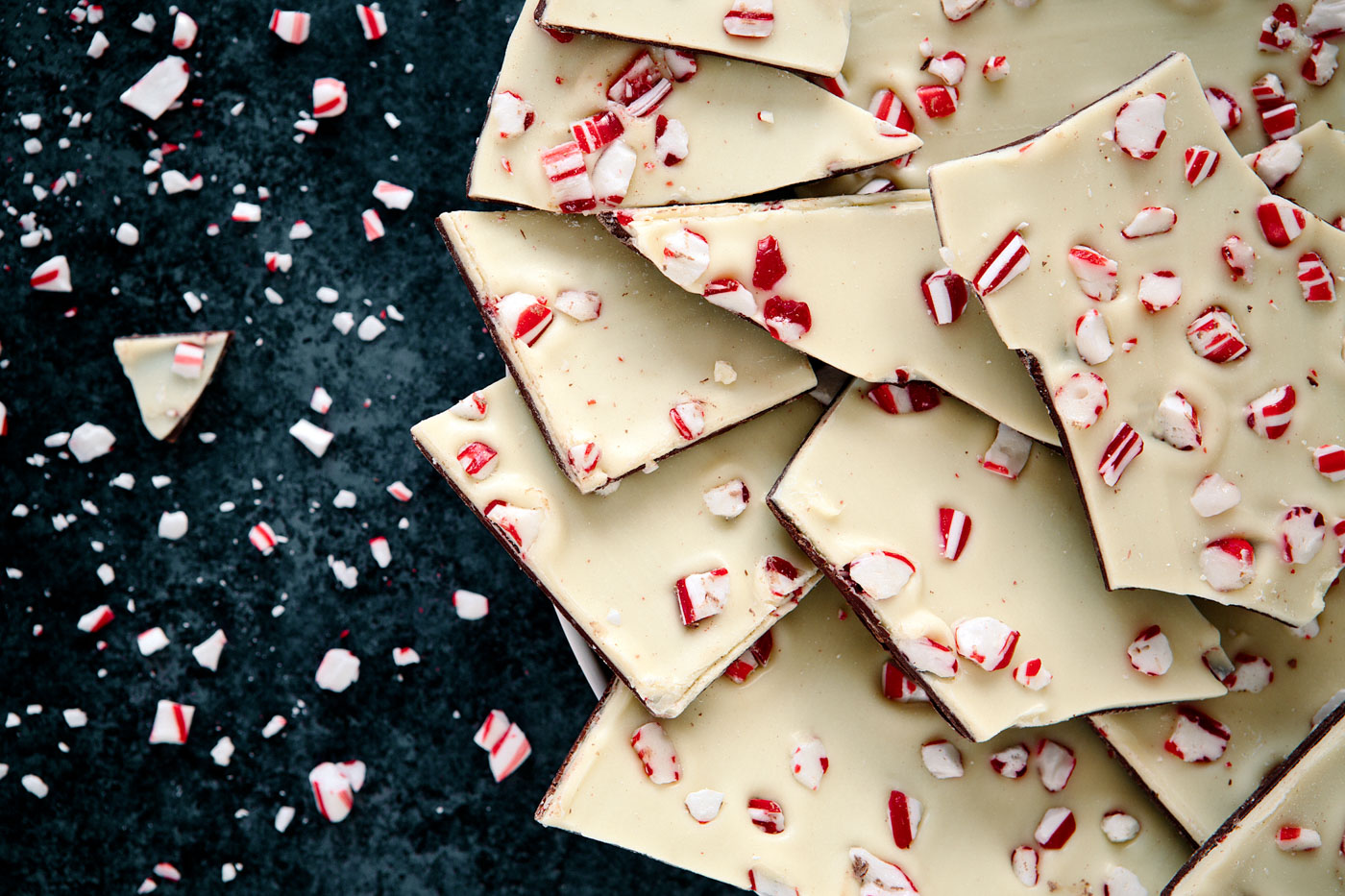There’s something in the air.
It’s that familiar feeling that descends upon us at the end of each year. Our minds have shifted from work mode to holiday hustle. Emails, texts and phone calls fly to and fro, confirming travel dates and arrival times. Bakeries and cafés pump out aromas of cinnamon and cloves, giving passersby a waft of warmth in the cold December air. Our favorite coffee cups—now available in Christmas red—are filled with foamy gingerbread, peppermint mocha and eggnog lattes. Everywhere we go, our senses are overloaded with holiday cheer. Christmas jingles invite us to stop and listen. Gleaming menorahs await lighting. Coniferous trees, swathed in twinkling lights and tinsel, beckon the kid in us to come in closer for a look. This season is all about the feelings.
For many around the world, the end of the year is about devoutly celebrating Christmas and Hanukkah. For others, it’s about ringing in a prosperous New Year, wishing loved ones good health and good fortune. Food is central to this season. Livestock is fattened. Bakeware is pulled from cupboards. Butter, eggs, milk and cream are bought in abundance. Refrigerators and pantries are stocked with cooking essentials. Brandy, rum, spices, citrus and chocolate—from white to dark—are commonplace during this month of festivities. All the anticipation and preparation add to the holiday fervor.

There’s a reason why they say there’s no place like home for the holidays. Traditional holiday foods, some steeped in religion, typically have one main purpose: to be shared and eaten amongst family and friends. Across the globe, cultures have celebrated the season with variations of sweets and feasts. Taking an extra helping is not frowned upon, but encouraged. The repetition of breaking bread with dear ones who’ve come from near and far is how we show our affection and appreciation, gratitude and devotion.
For me, growing up in Canada meant the two and a half week recess from school was split between frolicking in fresh snow, and getting on a plane to visit family in India. Taking in the population of travelers at Pearson—how we locals referred to Toronto Pearson International Airport—was one of my favorite things to witness during this time of year (though I’m sure the long lines drove my parents crazy). My brother and I would stuff our carry-ons with enough Nestlé Turtles, Toblerone and candy canes to last the entire duration of our trip. We would often break journey in London to visit cousins, hopping off our Air Canada flight to absorb the sights, sounds and smells of winter in the U.K.
Once there, we found one item is a traditional must for an English Christmas dinner–mince pie. The ingredients for this classic British dish date back to the 13th century, when crusaders brought home Middle Eastern recipes infused with spices, meats and fruits. This savory pie—commonly referred to as “Christmas pie”—is rich in history and religion, though today’s version is tied more to British culture than beliefs. Filled with a mixture of minced meat, apples, raisins, cinnamon, cloves and nutmeg, these plentiful pies are baked in single-serving portions in Britain, but full-sized pies are easily found in New England. Regardless of size, this staple dish is a favorite for Christmas, but as I grew up, I realized that Britain is far from the only place with a signature celebratory dish.


In France, Belgium, Québec and New Orleans, réveillon—which gets it’s name from the word réveil, meaning “waking”—is a grand, extended dinner held the night before Christmas and on New Year’s Eve. Participants feast upon a menu of opulent foods, staying awake past midnight and eating into the wee hours of the morning. Sumptuous dishes of lobster, escargot, oysters and foie gras are just a few of the items alongside the traditional dish of turkey with chestnuts. In French-Canadian homes, variations of tourtière (meat pie) will be made, filled with finely ground pork, beef, rabbit, wild game or fish, depending on what is regionally available. Cinnamon and cloves are commonly added, giving tourtière it’s unique taste. Its accompaniments also vary by region: ketchup, maple syrup, molasses, mustards, relishes, and cranberry preserves are some options to dip your savory pie into.
Desserts are also a big deal during réveillon, or le gros souper (the big supper), as they call it in Provence. Here, 13 desserts—representing Jesus Christ and his 12 apostles—are served, beginning with dried fruits and nuts, and ending with richer sweets like the traditional Christmas cake, bûche de Noël (yule log). Made from a genoise, this sweet roulade is typically filled and covered with chocolate or chestnut buttercream. The ends are cut and placed atop and on the side of the cake to resemble cut off branches, adorned with sprouting meringue “mushrooms” and fresh berries. Powdered sugar is dusted to mimic a light snowfall, making this cake almost too idyllic to eat.


La Vigilia (The Vigil) is how Italians commemorate the Vigilia di Natale—the wait for the midnight birth of baby Jesus. Observant Catholics, who refrain from the consumption of meat or milk products as Roman Catholic tradition states, opt instead for fish during their grand Christmas Eve dinner, as it is considered a fasting day, a tradition that began in Southern Italy. Festa dei sette pesci (The Feast of the Seven Fishes) is enjoyed by Italian-Americans, though no set number of dishes is mandatory. The quintessential, Southern Italian dish of baccalà (salted cod fish) would be included in the feast, giving a nod to the region’s history. Whiting, anchovies, sardines, squid, clams, mussels, octopus and shrimp are also popular for the Italian Christmas Eve dinner.
No matter how grand the Christmas banquet, no meal is complete without dessert. Panettone—a sweet loaf bread that originated in Milan—is the beloved Christmas cake enjoyed throughout Italy, Europe and the Americas. The classic panettone is made from flour, eggs, butter, live yeast, dried raisins, candied oranges and lemon zest. The dough—similar to sourdough—slowly ferments and proofs for at least 12 hours, giving the bread it’s sweet and airy, yet buttery and rich quality. A master baker who understands the intricacies of handling live yeast and is well versed in the fermentation process,can carefully control the dough’s temperature and acidity, producing a panettone that is otherworldly. Once baked, the bread has a signature domed top and cylindrical base, and is cut into vertical wedges for serving. If diners are too stuffed for panettone after dinner, a slice with their morning espresso is a delicious alternative.
Nochebuena, celebrated in homes on Christmas Eve in Spain, Latin America and the Philippines, is the largest feast of the season and is traditionally eaten after attending Misa de Gallo (Midnight Mass). Lechón (roasted pig) is often at the center of this grandioso meal; however, turkey is the star of the night in Peru, while Spaniards commonly commence their dinner with fish. Tamales are a staple dish for Christmas in Mexico, and customary to enjoy during the nine-day commemoration known as Las Posadas, an observance of Mary and Joseph’s journey to Bethlehem. Known for their time-consuming preparation, the making of tamales is a family project, gathering grandmothers, mothers, daughters and granddaughters together for this special tradición. Hominy—dried corn that has been soaked in an alkaline bath—is ground to create masa, the dough that is first spread onto corn husks or plantain leaves to create the outside of tamales. A generous scoop of filling—pork, beef or chicken that has been cooked in either a red or green molesauce—is placed in the middle, before being wrapped then steamed in batches. The almost obligatory consumption of tamales extends from the Feast of Our Lady Guadalupe through Three Kings’ Day, a duration of nearly a month to stuff oneself on these savory, hot pockets.


I’m a firm believer of food being a gateway into other cultures. We may not be able to speak the same languages or worship in the same manner, but fundamentally as humans, we can always share a meal together. I didn’t grow up with Jewish classmates, so my knowledge of Hanukkah was limited to my school’s curriculum until I became older and mingled with new friends. I eventually had the pleasure of trying traditional holiday food, such as the classic potato pancake, latke, and the pillowy sufganiyot, a symbol of the Festival of Lights in Israel. This delicious jelly doughnut—similar to a German Berliner—is available at both Jewish and non-Jewish bakeries throughout the United States during Hanukkah. It’s made by deep-frying balls of dough and then injecting them with strawberry jelly, though some variations include more extravagant fillings like chocolate and vanilla cream, or dulce de leche. A dusting of powdered sugar completes the sufganiyot, and this popular pastry is adored and enjoyed by all ages during the Jewish holiday.
Kwanzaa, the first specifically African-American holiday, celebrates African heritage, culture and unity. Observed in the U.S. and Canada, the term Kwanzaa comes from the Swahili phrase matunda ya kwanza, meaning, “first fruits of the harvest.” Symbolic foods representing the bounty of harvest, called the mazoa, are included, such as yams, okra, sweet potatoes, squash and bananas. Beyond that, there are no rules to what is eaten during the holiday. From sub-saharan African dishes to soul food from the American South to Caribbean comfort foods, the Kwanzaa menu is as broad reaching as the African diaspora. So it’s not uncommon at all to find delicious dishes such as jerk chicken, collard greens, Cajun catfish, seafood gumbo, and doro wat (Ethiopian chicken stew) sharing the same table.
In Japan, a wonderful feast takes place on the last night of the year: osechi-ryori. There are many variations of osechi depending on the region. Sashimi and sushi are often eaten, as is a soup with mochi rice cake. Traditional osechi is made up of many dishes, each with a special meaning to celebrate the New Year. It could include herring roe, or kazunoko—kazu meaning “number” and ko meaning “child”—which symbolizes the wish for many children. Konbu, a type of seaweed, is associated with joy. Black soybeans, called kuro-mame, represent the desire for health. Tazukuri, dried sardines cooked in soy sauce, symbolize the hope for an abundant harvest. An egg roulade called nishiki tamago—where the egg is separated before cooking—stands for wealth and good fortune. Eating toshikoshi soba, literally meaning “year-crossing soba,” is also a common ritual on New Year’s Eve as well as New Year’s Day. The noodles are symbolic for crossing from one year to the next and since they’re cut easily, it also represents letting go of any regrets of the past year.

During the holidays, we are reminded of the good in humanity. There is an almost universal effort toward being more compassionate, more generous with smiles and politeness. Families come together, and the littlest ones—whose infectious laughter and jubilation brings forth similar emotions in us—are cherished. Though people may celebrate the season differently across the world, we share the same desires: peace, love, good health and good fortune. Despite our differences, we can all understand the language of love.
The kindness and warmth we share even with strangers during this season shouldn’t grow cold once the feasts are consumed, and the decorations have come down. No matter the time of year, let’s continue to open our hearts, and to share our tables with one another.
The more the merrier.







Our comments section is for members only.
Join today to gain exclusive access.